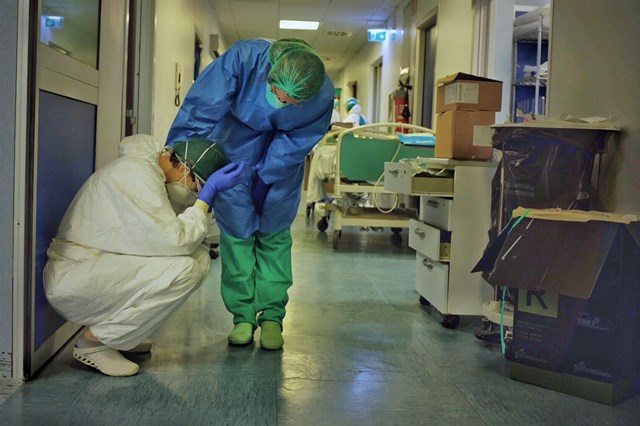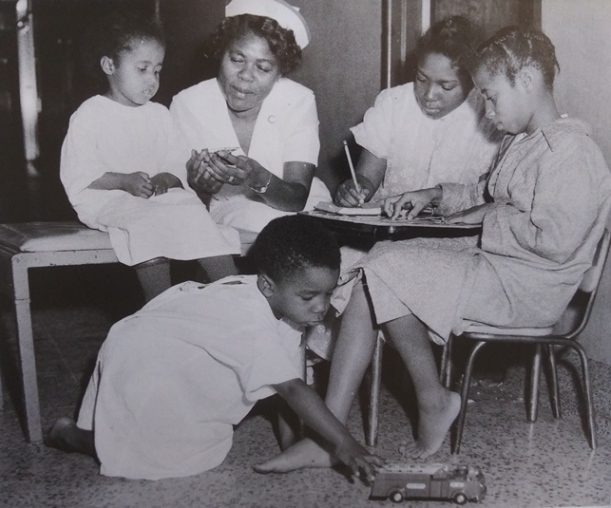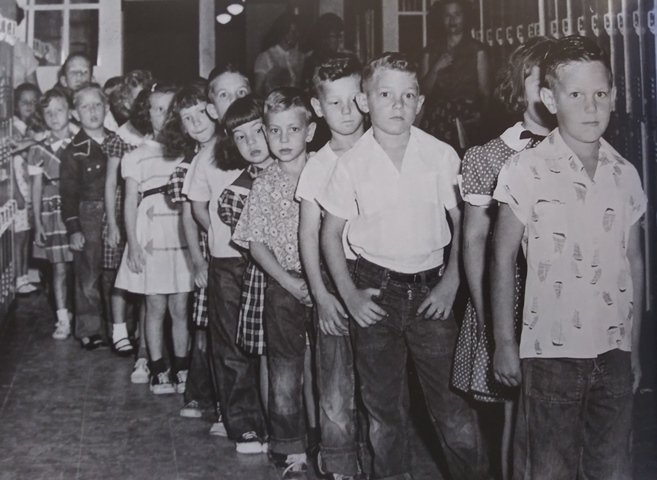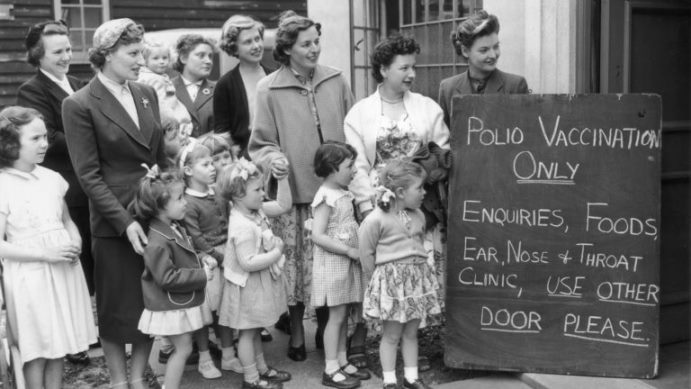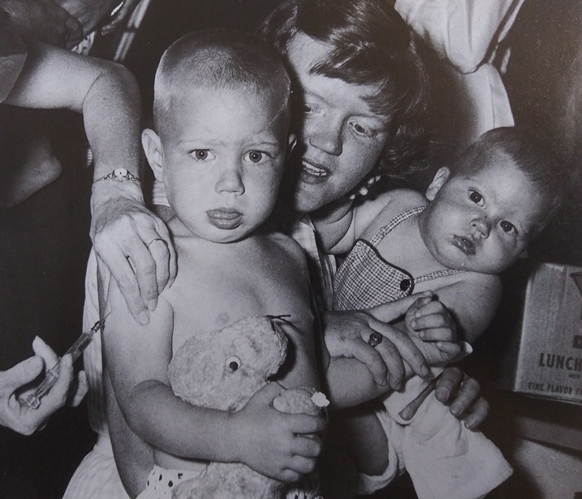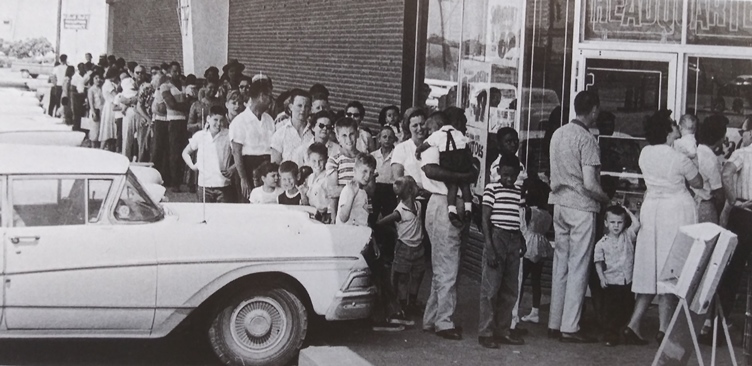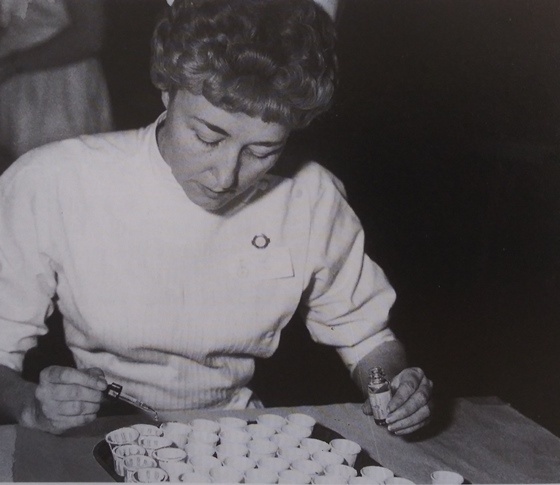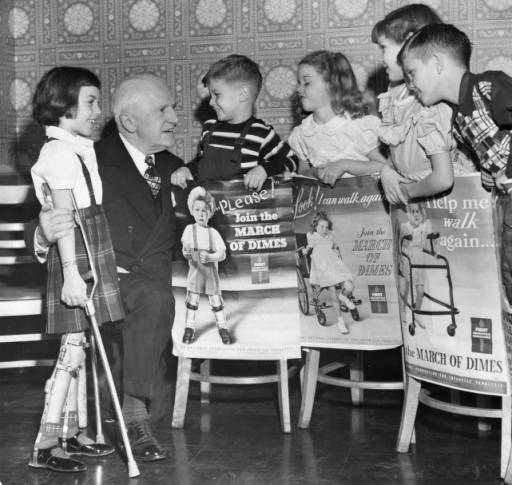
Today we continue in our appreciation for the medical field, who has been streeeeetched to their limits during these past several weeks, and will probably all be suffering from PTSD for the rest of their lives. But back in July of 1970, high-haired Connie Wharton and Jean Davis were keeping it casual and lowkey while lifting newborns out of stork/kitten/kangaroo boxes at Jefferson Davis Hospital, the first publicly-owned Houston hospital to accept low-income patients.
Fun fact Friday: the hospital was largely abandoned in the 80s, thought to be full of ghosts, named a city landmark, and then destroyed renovated into artist lofts for the rich and crafty. Plus, everyone knows buildings cannot be named after a former president of the Confederate States; we’re too busy erasing history to make everything PC.
This next image shows nurses and patients at Houston’s St. Elizabeth’s Hospital in the Fifth Ward in March of 1959. Nobody likes to be barefoot, donning a hospital gown, but some encouragement, attention, and a fire truck can go a long way toward healing.
Our final Houston-based medical subject is Dr. Katharine Hsu, a pediatric doctor who came to America from China in 1948. She served as Chief Resident Physician in Pediatrics at the Children’s Hospital in Shanghai, but when the Japanese invaded the city in l94l, she fled through enemy lines and joined her husband at Chung Cheng Medical College as Head of Pediatrics. Here she takes vitals of a shirtless youngster in July of 1953 at–you guessed it–Jefferson Davis Hospital.
Fun Fact Friday: After tuberculosis took the lives of her brother and sister, she made it her goal to stop the spread. She established a one-room, one-nurse pediatric TB facility which later expanded into the Children’s TB Clinic and Hospital, where she worked from 1953 to 1969.
Per her obituary in 2007, she died at the age of 93.
When the use of the drug Isoniazid proved beneficial in treating TB patients, Katharine envisioned using it as a preventive against the disease. Since her extensive testing and studies proved overwhelmingly successful, the preventive treatment was adopted worldwide…The International Biographical Center of Cambridge named her International Woman of the Year in l996-l997 for her contributions to medicine, research, and education.
Today we salute the men and women in past and present medical fields, doing their best to keep the rest of us alive, with all the skills to treat and diagnose when we are helpless and vulnerable.
